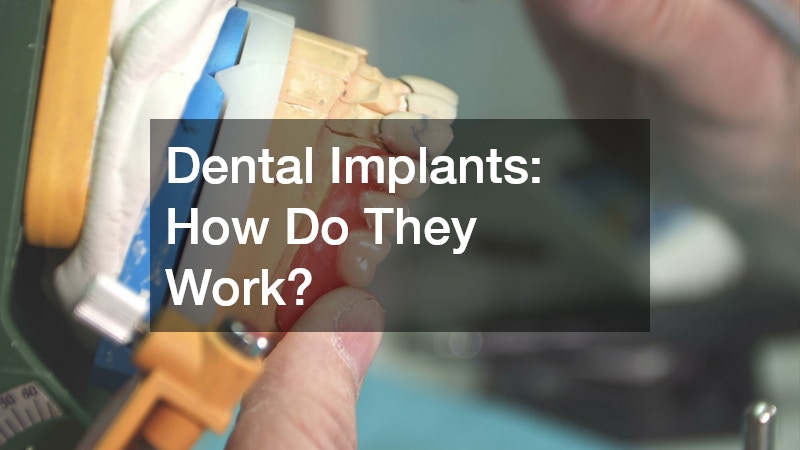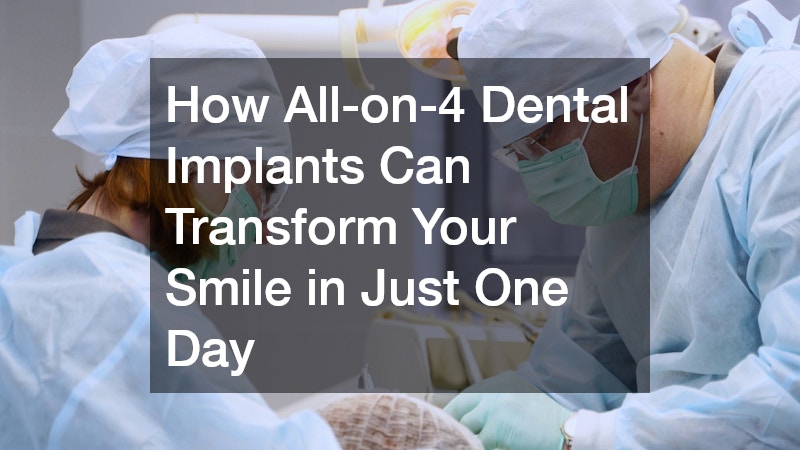In this article, we will explore the fascinating world of dental implants. Discover how these modern dental solutions can transform your oral health and provide long-lasting results. We will delve into the process, benefits, types, and care of dental implants, providing you with comprehensive insights into why they are a preferred choice for tooth replacement.
What Are Dental Implants?
Definition and Components
Dental implants are artificial tooth roots typically made of titanium, a biocompatible material that integrates well with the jawbone. They serve as a sturdy foundation for fixed or removable replacement teeth, helping restore both function and aesthetics. An implant consists of three main components: the implant, the abutment, and the crown, all working together to provide a natural-looking tooth replacement.
The implant is surgically placed into the jawbone, where it gradually fuses with the bone through a process known as osseointegration. This fusion helps the implant remain securely in place, mimicking the function of a natural tooth root. The abutment is then connected to the implant, providing support for the custom-made crown that completes the tooth restoration.
This modern dental solution is designed to last for many years, often for a lifetime, when maintained properly. In addition to their durability, dental implants help prevent bone loss and maintain the natural shape of the face. Unlike other tooth replacement options, implants do not rely on adjacent teeth for support, preserving the integrity of the surrounding oral structures.
Who Is a Good Candidate for Dental Implants?
Dental implants are an excellent choice for most individuals with one or more missing teeth who are looking for a long-term solution. Ideal candidates typically have healthy gums and adequate bone density to support the implant. However, advancements in dental technology now allow individuals with lower bone density to become candidates through bone grafting procedures.
It is important for potential candidates to have good oral hygiene habits, as these are crucial for the success and longevity of the implants. Non-smokers are generally better candidates because smoking can impede healing and the integration process. Nonetheless, smokers may still receive implants with the proper guidance and commitment to quitting or reducing smoking.
Patients with chronic conditions such as diabetes or heart disease should consult with their doctors to evaluate the risks and benefits. Ultimately, determining candidacy for dental implants requires a thorough evaluation by a dental professional, including imaging and a review of medical and dental histories. This ensures that the treatment plan is tailored to the individual needs and conditions of the patient.
How Are Dental Implants Placed?
Step-by-Step Surgical Procedure
The placement of dental implants is a multi-step surgical procedure typically performed over several months. It begins with a detailed evaluation, including imaging and planning, to ensure optimal placement of the implant. The first surgical step involves inserting the implant into the jawbone beneath the gum line.
After the implant is placed, the osseointegration process begins, during which the implant fuses with the jawbone. This stage is crucial for the stability and success of the implant, often taking several weeks to months to complete. Once the implant is securely fused, a minor surgery is performed to attach the abutment, which will hold the final crown.
The final step involves fitting the custom-made crown onto the abutment, completing the restoration process. This crown is designed to match the shape, size, and color of surrounding teeth for a natural appearance. The entire process requires careful coordination between the dentist, surgeon, and lab to achieve optimal results.
Recovery and Healing Process
Recovery from dental implant surgery varies among patients, but it typically involves a few key stages. Initially, patients may experience swelling, discomfort, and mild bleeding, which can be managed with prescribed painkillers and proper aftercare. Maintaining oral hygiene and following the dentist’s post-operative instructions are vital for a smooth recovery.
The healing process is gradual, with initial gum healing occurring within the first few weeks. However, osseointegration, the bone fusion process, continues for several months to ensure stability and longevity of the implant. During this period, regular follow-ups are scheduled to monitor progress and address any complications that may arise.
It’s crucial for patients to avoid hard or sticky foods during the healing phase to prevent stress on the implant site. As healing progresses, most patients can gradually resume normal dietary and oral hygiene practices. Overall, patience and diligent care during recovery significantly contribute to the success of dental implants.
Potential Risks and Complications
As with any surgical procedure, dental implant placement carries some risks and potential complications. Common risks include infection at the implant site, damage to surrounding structures such as nerves or blood vessels, and implant failure due to inadequate osseointegration. Early detection and management of these issues are essential for minimizing complications.
Sinus complications can occur with implants in the upper jaw, especially if they protrude into the sinus cavity. This can lead to discomfort and require additional procedures to correct. Another potential risk is peri-implantitis, a condition similar to gum disease that affects the tissues around the implant, risking implant stability.
However, these risks can be significantly reduced through careful planning, execution by an experienced professional, and rigorous adherence to post-operative care instructions. Pre-surgical evaluations and choosing qualified professionals for the procedure enhance the likelihood of successful outcomes. Patients are encouraged to discuss risk factors and prevention strategies with their healthcare team before undergoing implant surgery.
How Do You Care for Dental Implants?
Daily Oral Hygiene Practices
Proper daily oral hygiene is essential for maintaining dental implants and ensuring their long-lasting success. Just like natural teeth, implants require regular brushing and flossing to prevent plaque buildup and protect surrounding gums from infection. Using a soft-bristled toothbrush and non-abrasive toothpaste helps prevent damage to the implant surface and gum tissues.
Incorporating an antibacterial mouthwash into the daily routine can further reduce bacteria and plaque around the implants. Water flossers or interdental brushes can be especially useful for cleaning hard-to-reach areas and removing debris beneath the gum line. Consistency in these practices not only safeguards the implant but also promotes overall oral health.
Patients are advised to avoid chewing on ice or using their teeth to open packaging to prevent damage to the crown. It’s also important to minimize the consumption of sugary and acidic foods to reduce the risk of gum inflammation and implant-related complications. Adopting these daily habits significantly contributes to the longevity and success of dental implants.
Regular Dental Check-Ups
Routine dental visits play a critical role in the ongoing care and maintenance of dental implants. During these check-ups, dental professionals thoroughly examine the implants, surrounding gums, and overall oral health. Regular cleanings help keep plaque and tartar at bay, reducing the risk of peri-implantitis and other complications.
These visits also provide an opportunity to detect and address any early signs of issues that could affect the implant’s integrity. Early intervention can prevent more significant problems, such as infection or bone loss, ensuring the long-term success of the implant. Additionally, dental professionals can provide guidance on any changes needed in oral care routines.
Staying on top of these appointments is essential, even if no immediate concerns are apparent. Consistent follow-ups affirm the stability and functionality of the implants while offering peace of mind to the patient. This proactive approach is key to preserving the investment and enjoying the benefits of dental implants over a lifetime.
Handling Common Issues and Maintenance
While dental implants boast a high success rate, patients may occasionally encounter common issues that require attention. For instance, gum inflammation around the implant site can develop if oral hygiene practices are insufficient. Prompt treatment and improved oral care practices can resolve this issue before it progresses into a more serious condition.
In rare cases, patients might experience loosening of the crown or abutment, which necessitates professional evaluation and adjustment. Such mechanical issues can often be resolved quickly by a dental professional without compromising the implant itself. Additionally, patients should be vigilant about any persistent discomfort or pain, as these symptoms could indicate underlying problems requiring professional intervention.
Overall, maintaining open communication with a dental professional ensures the timely resolution of any concerns and reinforces the health of the implants. Patients are urged to report any changes or discomfort to their dental practitioner promptly. This attentive approach solidifies the long-term success and benefits of dental implants, providing patients with a reliable solution for missing teeth.
In conclusion, dental implants offer a reliable and effective solution for those looking to replace missing teeth. With proper care and consideration, they can provide significant improvements in both functionality and appearance, enhancing your quality of life. If you’re considering dental implants, consult with your dentist to determine the best approach tailored to your needs.




